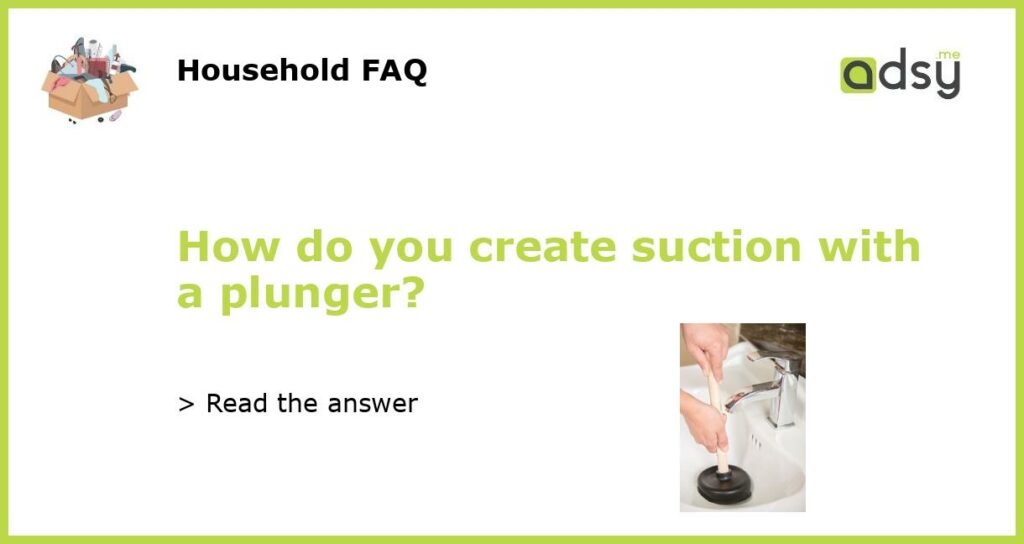Understanding the Basics of Suction
Suction is the force created when pressure is reduced in a contained space, causing the surrounding air or fluid to rush in and fill the void. In the case of using a plunger, the act of plunging creates suction by manipulating the air or liquid inside a clogged drain or toilet.
Choosing the Right Plunger
Before you can create suction, it’s important to have the right tool for the job. There are two common types of plungers – a cup plunger and a flange plunger. The cup plunger is best suited for sinks, tubs, and showers, while the flange plunger is designed for toilets. Ensure that the plunger has a tight seal with the surface you’re working on to maximize the effectiveness of suction.
Proper Plunging Technique
To create suction with a plunger, follow these steps:
- Place the plunger over the drain or toilet opening, ensuring a tight seal.
- Using both hands, apply downward pressure on the plunger to push out any trapped air or water.
- Quickly pull up on the plunger to create suction.
- Repeat the plunging motion several times, maintaining a tight seal.
- After several repetitions, release the plunger to allow water or air to rush in and dislodge the clog.
Troubleshooting Common Issues
Creating suction with a plunger may not always produce the desired results. Here are some common issues you might encounter and how to address them:
- Inadequate seal: If the plunger doesn’t form a tight seal, wetting the rim of the plunger or the surface you’re working on can improve suction.
- Water leakage: To prevent water from escaping around the plunger, ensure that the drain or toilet bowl is filled with enough water to cover the suction cup.
- Stubborn clogs: In some cases, a plunger may not be enough to remove a stubborn clog. Consider using a drain snake or contacting a professional plumber for assistance.
Preventing Future Clogs
While knowing how to create suction with a plunger is essential for clearing clogs, it’s equally important to take preventive measures. Here are some tips to help prevent future clogs:
- Avoid flushing non-flushable items down the toilet, such as diapers, sanitary napkins, or cotton balls.
- Install strainers or screens in your sinks and shower drains to catch hair and large debris.
- Regularly clean out the drains using a mixture of vinegar and baking soda or a commercial drain cleaner.
- Be mindful of what you pour down the drain, as grease, oil, and food scraps can build up and cause clogs.






